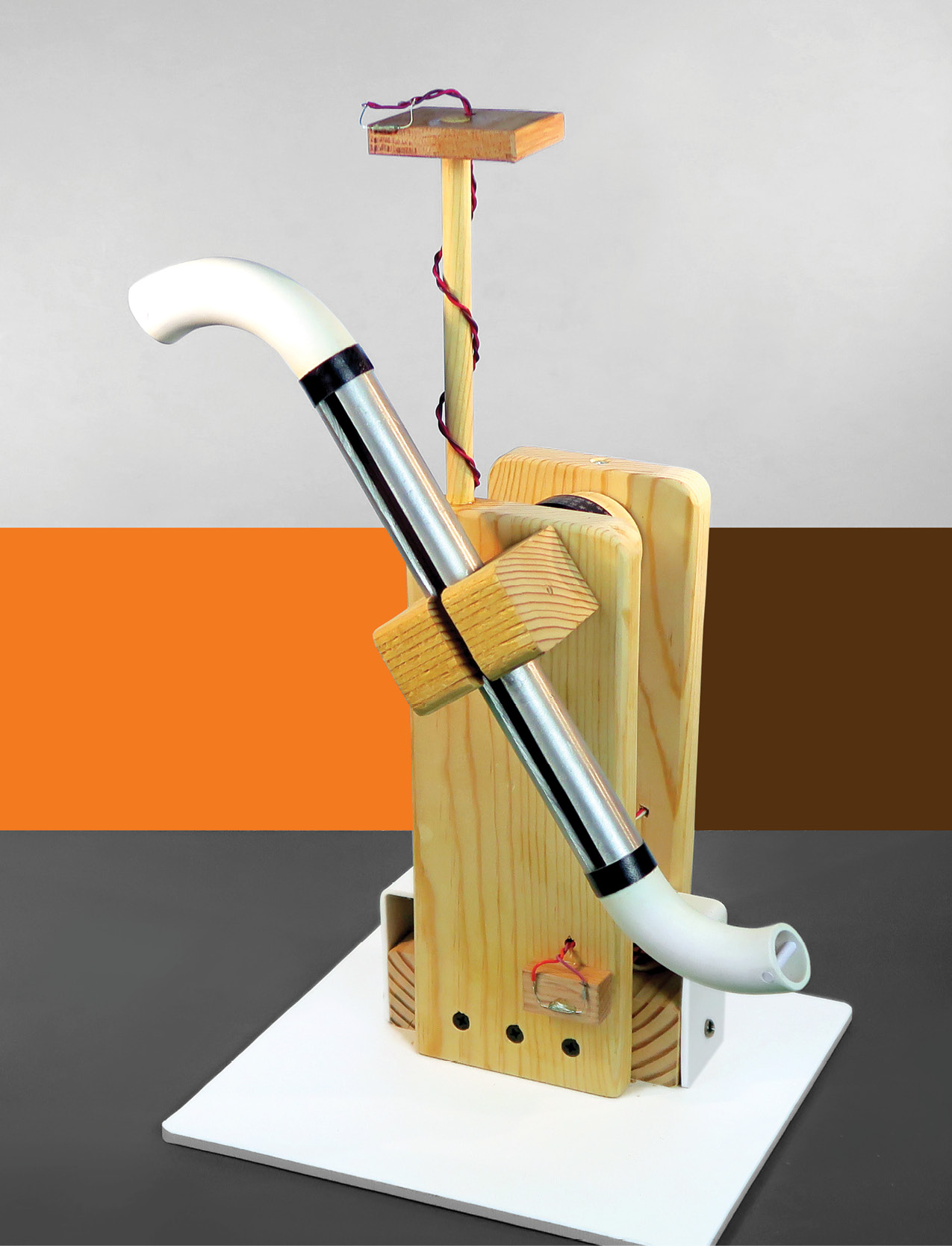A magnet falls slowly through an aluminum tube because the magnetic field has to do some work, creating eddy currents in the aluminum. I described this phenomenon in Make: Volume 59 and used it to light LEDs. It’s well known but difficult to measure, so you have to explore it using trial and error.
One thing we do know is that if you move twice as close to a point-sized magnet, it exerts four times as much force. This means that the slowing effect on the falling ball magnet will increase radically if you can find a tube that is only a fraction bigger than the ball.
When you start shopping for aluminum tube, you’ll often find it described by its outside diameter, abbreviated OD and measured in fractions of an inch, while the wall thickness is measured in decimal values of an inch, and you have to figure out the internal diameter (ID) yourself.
I’ll use my test tube as an example.
» OD: 1″
» Wall thickness: 1/8″ = 0.125″
» Subtract double the wall thickness from OD to get ID: 1.0 – 0.125 – 0.125 = 0.75″
» Ball diameter: 5/8″ = 0.625″
» Total gap around the ball: ID minus ball diameter, which is: 0.75 – 0.625 = 0.125″
Shopping online I found some aluminum tube with OD ¾” (0.75″) and walls only 0.028″ thick. So the ID was 0.75 – 0.028 – 0.028 = 0.694″ and therefore the total gap around the ball was 0.694 – 0.625 = 0.069″. When I dropped the ball through this tube, it took a full 5 seconds to fall 3 feet.
Could I do better than that? Yes, I found a piece of tube with ¾” OD but thicker walls, allowing less room inside. The walls were 0.04″ thick, so the internal diameter was 0.75 – 0.04 – 0.04 = 0.67″ and the total gap around the ball was 0.67 – 0.625 = 0.045″. This time the ball took 8 seconds to fall 3 feet!
Objects falling freely under the force of gravity will accelerate, but a ball magnet resisting gravity seems to fall at a constant speed. Therefore, if you double the length of the tube, the ball should take twice as long to reach the bottom.
How much will the speed change when you cut a slot in the tube? I don’t know. If it does change, will the width of the slot make a big difference? I don’t know. Will bigger ball magnets perform better than small ones? I don’t know that, either! The mass of the ball will increase with the cube of its diameter, but who knows, its magnetic field may increase by that much too.
You’ll need to do some experimenting to find out. But bear in mind that a longer, fatter tube and a heavier magnet will require a much more powerful motor to turn the tube upside-down while the ball is sitting at one end.



















